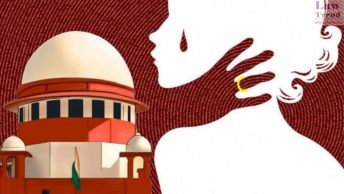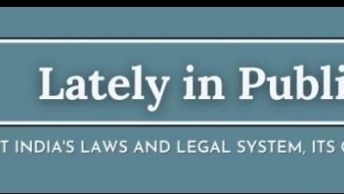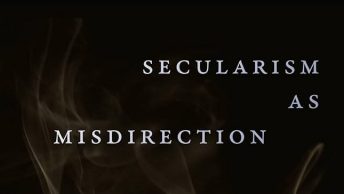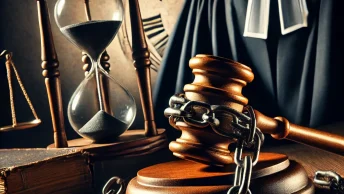GUEST BLOGGER: RAMPAL OF THE BAILEY
I think the judgments raise as many questions as they answer. Some first impressions-
1. KGB (Chief Justice) excludes the creamy layer, but after setting out the OM criteria says they may be relaxed if enough OBCs are not found to fill the seats. This defeats the entire point of the creamy layer. None of the other judges specifically concur with the relaxation holding. Pasayat and Bhandari both hold the creamy layer violates art. 14 and the basic structure. Raveendran says he agrees with Pasayat and KGB that creamy layer has to be excluded. Hopefully, the relaxation of standards can be read as obiter.
2. It is at the least odd to refuse to consider pvt edu inst considering that arguments were advanced qua them, without any objections from the respondents, as Bhandari records in his op. they could have been impleaded if required, and again, as Bhandari points out this would have saved valuable time and expense as regards future litigation. It would be another thing if the judgment were to hold that the petitioners lacked locus, a finding it does not make.
3. KGB refuses to apply the creamy layer to SC/STs saying that they are a class by themselves and that it is not a general concept of equality. This is a dangerous holding, but again one he seems to be alone in. Pasayat and Raveendran are silent on this, and Bhandari leaves the question open to be decided in a future case. From the tenor of the other judgments it is clear that they consider the creamy layer concept to be crucial qua equality (treating unequals equally and vice versa).
4. The factual basis for the holding that caste has not formed the sole basis for the fresh reservation leaves much to be desired. After extensively quoting various sociologists and judgments, KGB brushes off this question in three short paras (paras 140-142) without providing any details of what precisely the other criteria were and whether they were satisfactory. This is all the more disturbing in view of the emphatic holding by 3 out of 5 judges (Pasayat, Thakker, Bhandari) that the government has no OBC data and its figures (52% of popn is OBC) cannot be accepted.
5. It would have been reasonably simple to hold that art. 15(1) forbids only ‘discrimination’ on the basis of caste and since affirmative action is not discrimination there is nothing wrong in reservations being caste based. This argument would flow naturally from the Courts view that arts. 15(4) and 16(4) are facets of equality and not exceptions to the equality principle. KGB, Pasayat and Thakker reiterate the facet view, while Bhandari views 15(4) and 16(4) as exceptions to the (formal) equality principle. Tarun points out that this may be because they (the judiciary) wish to retain control over reservations.
6. Most interestingly, it seems eminently arguable that 3 out of 5 judges have held that once a person is a graduate he can never be considered a member of a SEBC (see para 139(5) of Pasayat’s judgment, and para 273 of Bhandari’s judgment). This would take all IIMs and post grad institutions out of the purview of reservations. (SEE COMMENTS FOR CORRECTION)
7. Standard of review- while KGB explicitly rejects strict scrutiny, Pasayat seems to confuse it with art. 19 reasonableness review (cites VG Row etc)and calls it just a tag (paras 132-133) and mysteriously says ““In that sense, the strict scrutiny test is not applicable and indepth scrutiny has to be made to decide the constitutionality or otherwise, of a statute.” Bhandari also emphasises the value of comparative material and holds that caste is similar to race and ‘careful scrutiny’ must be applied. Raveendran is silent on the point. It cannot be said that there is a clear plurality holding qua this issue.
8. Bhandari’s opinion has several holdings qua art. 21A. he orders a time limit to be set for its implementation within 6 months and virtually orders the UoI to enact a law for compulsory school education, while finding that primary education is unsatisfactorily funded compared to higher education. It is unknown whether all these issues were argued (why do the other judges not mention them)or whether all these holdings are purely gratuitous. Bhandari also challenges the established dogma that the First Parliament can be equated with the Constituent Assembly since their composition was nearly identical holding that art. 15(4) was a deviation from the Framers vision. He also pitches in strongly for the use of income criteria.
9. Pasayat’s judgment reads like the dissent that never was and he doesn’t seem to make any specific findings qua the 93rd amendment despite quoting extensively from various judgments.
10. I suspect that in order to make the judgment ‘unanimous’ (a dubious claim given the possible pluralities), KGB conceded creamy layer, and the rest conceded the validity of the constitutional amendment and the law. Being lacking in clarity, the judgments are sure to spawn future litigation, the most unsatisfactory thing in this area of the law.







Dear Venkatesan,
Thanks for putting this up. Just one addition- para 125 of Pasayat J.’s judgment sheds some further light on his holding qua graduates, since it says the test must be ‘at the most graduation’ for backwardness.
On point 6, I think, you seem to miss an essential aspect of J.Pasayat’s judgment and P.P.Rao’s argument. Both discuss matriculation/graduation as the benchmarks to gauge educational backwardness of a class, not a candidate. That is, if there is a substantial number of graduates/matriculates in a particular class, then that clas must be out of the list. It cannot be interpreted to mean that individual graduates in a recognised class are ineligible to avail quota in P.G. Courses. The plea of graduation being a factor to identify backwardness is already recognised by the NCBC in its criteria while considering claims for inclusion and exclusion. (please see NCBC website). Like Justice Bhandari, you have arrived at the wrong conclusion that OBC quota is inadmissible in post-graduate courses. Except this, I found your other arguments persuasive.
The NCBC guideline using graduation as a factor to identify backwardness is here:
http://ncbc.nic.in/images/educational.pdf
You are quite right as regards point 6. I misread Pasayat J.’s judgment. Thanks for the correction. However, if as per 3 judges, graduation is a significant indicia of backwardness, it ought also to figure prominently in the creamy layer criteria. It seems odd to not let a person in (via reservations) if a majority of his caste are graduates even though he is not, but to nonetheless allow him the benefit of reservations even though he is a graduate as long as a majority of his class are not graduates. The tension probably lies in the fact that reservations are a group right, whereas the creamy layer is an individual centric conception.
Though he does not say it in so many words, J.Bhandari in fact wants an amendment of creamy layer criteria, to suggest that individual graduates are ineligible to avail quota.
The rest of the creamy layer criteria pertain to the candidates’ parents. This has a purpose. The purpose is not to close the door to the candidates on the basis of their eligibility, educational qualifications etc. for filling vacancies in any of the posts. Such a criterion, if amended on the basis of educational attainments of individual candidates, will be clearly violative of equality.
Now J.Bhandari’s formulation will lead to funny results. A qualified doctor will be considered as OBC, for the purpose of filling up vacancies of Government doctors. But the same doctor, if he wants to pursue post-graduation in medicine, will be told , sorry, you are not OBC!
5:35 AM
I have not read any of the judgments. However, if Justice Bhandari has ruled that caste is similar to racism, such an observation is groundbreaking indeed. More so in the light of the stern opposition of Government of India to attempts at including caste discrimination within the fold of Durban conference on Racism in 2001.
Let me confess that I have not read all the judgments.I find the
posts and comments in this blog very interesting. I think at some
point the discussion till then has
to be summarised so that readers
will know the important issues
on which there are many opinions.
“A qualified doctor will be considered as OBC, for the purpose of filling up vacancies of Government doctors. But the same doctor, if he wants to pursue post-graduation in medicine, will be told , sorry, you are not OBC!
“
This makes sense and is not funny.
There are no reservations for OBCS
in promotions.If all gradutaes are
considered as non-backwards irrespective of their caste then
they wont be eligible for reservation in PG courses.
In Preeti Srivastava case the
SC was against reservations
in super-speciality courses.
Dear Ravi,
I see the point. Thanks for pointing out the flaw. What J.Bhandari has suggested is a clear distinction between the 16(4) eligibility (as it concerns BCs in general), and 15(5) (which deals with SEBCs specifically). In which case, I understand, the same person has to be treated differently, that is, recognise he is OBC for the govt. post, but deny OBC status for post-graduation. But J.Bhandari is in a minority, and this aspect was not even argued before the Bench.
Dear Venkatesan
May I raise a small point here, reservations are for socially and
educationally classes that are
underrepresented.So the possiblity
of OBCS being underrepresented in
one (say job) may not be underrepresented in another (say
education) cannot be ruled out. If one goes further to the level of representation of caste, some castes are likely to be
underrepresented while some are
not.That is why in some states
the OBC reservation is divided
into subquotas to ensure that
some castes do not benefit at the
cost of others.The Sattanathan Commission and Ambasankar Commission in Tamil Nadu
pointed out that some castes have
cornered signifucant benefits through reservation while many lag
behind. But it needed an agitation by Vanniars to effect sub division
of OBC quota in Tamilnadu.The
backward classes belonging to muslims and christians have a quota
of 3.5% each, carved out of the 30%
OBC quota.
I think reservation in education and job, need not follow the same rationle that if you are entitled for one, you become entitled for another.It would be desirable to
maintain two sets of lists of backward castes, one for job, one for education with provision for
revision once in a decade or so.
//KGB (Chief Justice) excludes the creamy layer, but after setting out the OM criteria says they may be relaxed if enough OBCs are not found to fill the seats. This defeats the entire point of the creamy layer.
//
This means that if there are no poor OBCs, rich OBCs can take that seat.
How does this defeat the concept of creamy layer.
Allowing a Forward Caste student to take the seat alone defeats the cause of Creamy Layer
Ravi, I agree.
http://cpim.org/misc/19900909_obc_mandal_pk.htm
Article appeared in People’s Democracy dated September 9, 1990
Reservations For OBCs
Protect Unity With Social Justice
Prakash Karat
“The concept of an economic criterion is not a new proposal. As early as 1958, the Administrative Reforms Committee in Kerala headed by E.M.S. Namboodiripad, Chief Minister, suggested such a criterion for backward classes reservation. The Nettoor Damodaran Commission report of 1971 also made a similar suggestion. The Justice Chinnappa Reddy Commission report, the most recent in Karnataka, has recommended that from the OBC reservations those whose parents are income tax or sales tax assesses, hold land upto eight acres or are Class I officers can be excluded. In Kerala reservation in admissions to medical colleges is governed by an income criterion. Only those whose parents draw less than Rs, 20,000 per year are entitled to benefit from OBC reservation. In some other States like Tamil Nadu and Karnataka, there are two or three categories of backward classes, with the more backward either getting more fee concessions and other facilities or getting a greater quantum of reservations. The difficulty is that wherever OBC reservations already exist, the introduction of an economic criterion meets with strong resistance. Only when a broad consensus is reached can it be implemented. In Kerala, it has not been implemented so far as there is no such agreement. In the case of Bihar, when OBC reservations were being introduced for the first time in 1978, it was possible, after a destructive anti-reservation movement, to arrive at a formula which has been working since then. The 26 per cent reservation consists of 12 per cent of the most backward category listed in Annexure 1; eight per cent for other backward classes listed in Annexure II with an income ceiling of Rs 12,000 per annum; three per cent for women and three per cent for the poor of the forward castes. The National Front Government at the Centre should consider the Bihar Experience which brought about some stability in the tense caste situation. In this connection, the proposal of the Prime Minister for additional reservation of five to ten per cent for those economically backward can be accepted provided that this is allotted to those who do not fall within the reserved categories. This may help in alleviating the fears of those economically deprived amongst the forward castes. “
I dont know whether the situation is the same in Bihar.In Kerala
the issue of creamy layer and their
identification has an interesting
history.I think the judgment given
by SC in a case filed by Nair Service Society in Feb 07 was the final word on it by SC. What is
interesting is that excluding the
better off in OBCS is not a new
idea put forth in Mandal Commission
judgment.I understand that Karnataka has a quota for poor irrespective of their caste
or they being in the OBC list.
In 1990 Karat wrote
“In this connection, the proposal of the Prime Minister for additional reservation of five to ten per cent for those economically backward can be accepted provided that this is allotted to those who do not fall within the reserved categories. This may help in alleviating the fears of those economically deprived amongst the forward castes.”
That move was scuttled by the judgment given in Indra Sawhney case.I think after that left did
not evince any interest in that idea.Nor did the Congress press for it. But today it is Mayawati and not Karat who is talking about reservations for the poor among the forward castes.In 1990s BSP
took a different stand and was
seen as a party that was anti-forward caste.
Finally I have been searching
(in vain) for a comprehensive
data on reservations, sub-quotas
and criteria in all the states
which have OBC reservations
in job/education or in both,
with details about increase/
decrease in quota %. Recently
Orissa reduced the % of reservation
to OBCs. Some of the books refer to
pre 1990 details.Can anyone
provide such a list?
I cite Karat’s article to indicate how times have changed and so have
positions on reservation.
HI I am a anonymous blogger. I am following these blogs and I found Venkatesan, Arun and Rampal of the baily and others interpretation of judgement is very intresting. I am not a lawyer but I want to share my views on reservation, my views are nothing to do with law and or SC judgement interpretation.
Reservation concept is outdated in the present era. At present, there in no oppression of any caste by any caste. Even if oppression exists it is very rare. Most of the people are proud of their caste irrespective of what is their caste and it appears in their preference in intra caste marriages and extending their family name at the end of their name and etc. One should not interpret this as oppressing other castes. This era is only for talented persons. Talented people irrespective of their caste, creed and religion are going to shine. Reservation policy is an ill-gotten policy. In modern era i.e globalization and privatization, the caste based privileges are are nothing but divide and rule.
We assume that there are back ward castes in India. The backward caste conditions are different to different states and within the state. The so called OBCs from southern states (Tamil Nadu, Andhra Pradesh, Karnataka and Kerala) are economically and educationally strongly well placed then their counterparts in northern India. OBCs from North India are no match to OBCs from south India. Even if quota is implemented, all the OBC quota benefits go to OBCs from South India. I am very sure, that 90% of quota benefits in the central educational institutes will go to OBCs from South India.
Look at Tamil Nadu particularly; the Thevar community and Vanniyar communities are very well off than most of the so called forward castes in Tamil Nadu and in other states. Tamil Nadu is implementing 69% reservation on the paper. But at close scrutiny, total reservation percentage is around 90% because they fill general quota first and the so called OBCs are getting most of the general quota seats and then they are filled in their allotted OBC quota. Statistics shows that for last few years of medical admissions in Tamil Nadu, upper caste students are in single digit because OBCs in Tamil Nadu are able to compete with upper caste students. This situation is forcing upper caste students from not choosing medicine as their profession. A child from upper caste who wants to become a doctor has to change his mind and go for engineering or other course. Think how much stress an upper caste student is going through.
Think logically every student got only 14 hours to study because of 6 hours of sleep, eating food, taking bath etc. So forward caste students and OBC quota students have got availability of equal time then the question arises that how can forward caste students score more marks than OBC students in the qualifying criteria. Because most of the socalled forward caste students economical condition is no better than the OBCs.
If reservations are to be provided then they should be provided below or at graduate level. For example, look at Andhra Pradesh, A student from OBC is given a push at +2 level (govt. junior colleges are implementing reservation in admissions), then at graduate level, then at post graduate level and then at job level apart from giving BC scholarships. I think this is a very bad setting. I strongly believe a student cannot be given more than one push and after that they should mentally be prepared that only with talent and hard work they can move up in the ladder.
I think reservations for SC/STs are legitimate because they are oppressed and economically weak. If we talk about oppression of SC/ST, It is known fact that OBCs are oppressing SC/STs most, because upper castes are easily mix with SC/STs.
After reading the judgments, I agree to a great extent with the views in the blog post.The differences in the views of Chief Justice and Justice Bhandari are very obvious.Bhandari J. stresses that Indra Sawhney I is
binding and hints that it has restricted his hands. He strikes
a different note and the emphasis
on primary education is noteworthy.
Of the four the judgment by Raveendran J is the shortest and that deals mostly on the creamy layer issue. The Judgment by Passayat J and Thakker J goes back and forth citing various judgments on reservations but it by and large goes with the views expressed by the Chief Justice although the possibility of dissent is visible here and there
and in the end it disappears sans
a trace.
I find that many vital issues
are not adequately addressed
in the judgments when compared
to the observations made in the
stay order and questions posed during the hearings. For example although the judgment in Indra Sawhney case accepted the
stand that caste could be a starting point, this case provided
an opportunity to revisit the
whole issue, in light of the
functioning of NCBC, data on hand
and the lists (Central and States) and on identifying ‘socially
and educationally backward classes’
and revising the lists. As a result we know caste is a starting
point but we dont know what are the
other equally valid and acceptable starting points and what parameters should be taken into
account in determining whether a class is a SEBC. Although in some cases the Court has gone in to technical issues (e.g. Delhi Pollution Case)and had taken into account views of experts to arrive at decisions it is surprising that
in this case the Court says much
less on important questions. The lack of data which figured so prominently during the hearing
is not adequately addressed as an issue.
I think part of the problem is
a 5 member bench cannot simply
overrule the judgment given by
9 member bench in Indra Sawhney.
It will be desirable that a 11 member bench addresses afresh the issues raised , taking into
account the Indra Sawhney judgments
as well as the developments thereafter including judgments given in cases like Preethi Srivastava case.Otherwise we may see more cases in future on the issues raised by the Act.
The judgments in this case put exclusion of creamy layer as an essential norm in reservations for OBCS.But whether this will be circumvented by a constitutional
amendment is an important question.
I think the govt may opt to raise the income level but one may not be
surprised if we see a repeat of
Indra Sawhney II here.
Venkatesan and Ravi: Reservations have focussed on the SEBC aspect and not on the under-representation aspect. Were any figures placed before the Bench regarding the composition of the public services and educational institutions? Concentrating on the SEBC aspect, logically a graduate should be excluded from the benefit of reservations in both the public service and post grad educational institutions. Under-representation is a good rationale for State action in this area (appearing as ‘diversity’ in the US affirmative actions cases), with strong underpinnings in concepts of participatory democracy. Once a class is no longer a SEBC, it’s under-representation may purely be the result of impartial market forces, or reveal a deep seated tendency to continue to discriminate against that class, though it is now equally meritorious. Unfortunately, the chief way of ensuring that this sort of discrimination ceases is to turn equality of opportunity into equality of result by mandating that they be represented to a certain degree. Another way might be to raise the standard of proof required to show that their exclusion is based on factors besides class.
Anonymous: The creamy layer criteria are meant to ensure that those who can no longer be considered backward do not benefit from reservations. For this reason, relaxing them seems to me to defeat the point of having them in the first place.
Rampal, Although data/information on
represenation of SEBCS in education/employment is difficult to get,getting some preliminary data from universities and government need not be difficult as most states have quotas for SEBCS fot atleast a decade or two.
Data from TamilNadu indicates that the cut off marks in admissions
to professional courses are so
narrow that SEBCS cannot be
described as educationally
backward as a whole.Prof.Radha
krishnan has written on reservations in TamilNadu
and you will get an idea
of the status of the SEBCS.
In govt. employment he had
given some statistics (of
1999?) in an article published
in EPW. There also SEBCS are
not lagging behind. SCS/STS
are lagging behind.
Excluding graduates is a good
idea although it is controversial.
Basically today what is meant
by ‘socially backward’ may not
be applicable to most of the SEBCS.
Similarly educationally backward
also needs a rethink. Although some
commissions had suggested removal
of some castes from SEBC list as far i knew nothing had been done
on those suggestions. The list has
expanded over the years.
The judgments on reservation
for muslims in AP address some
important questions on assessing
backwardness.But Mr.Krishnan
who suggested the inclusion of some
groups among muslims in the SEBC list simply deduced from some books and articles that as they were pursuing traditional occupation
they were backward without
giving any data on how many
of the families in those
groups were pursuing such
occupations and what was their
social status. If you google for
it you would get his report.
You should also read the whole
report the oversight committee
headed by Veerappa Moily.